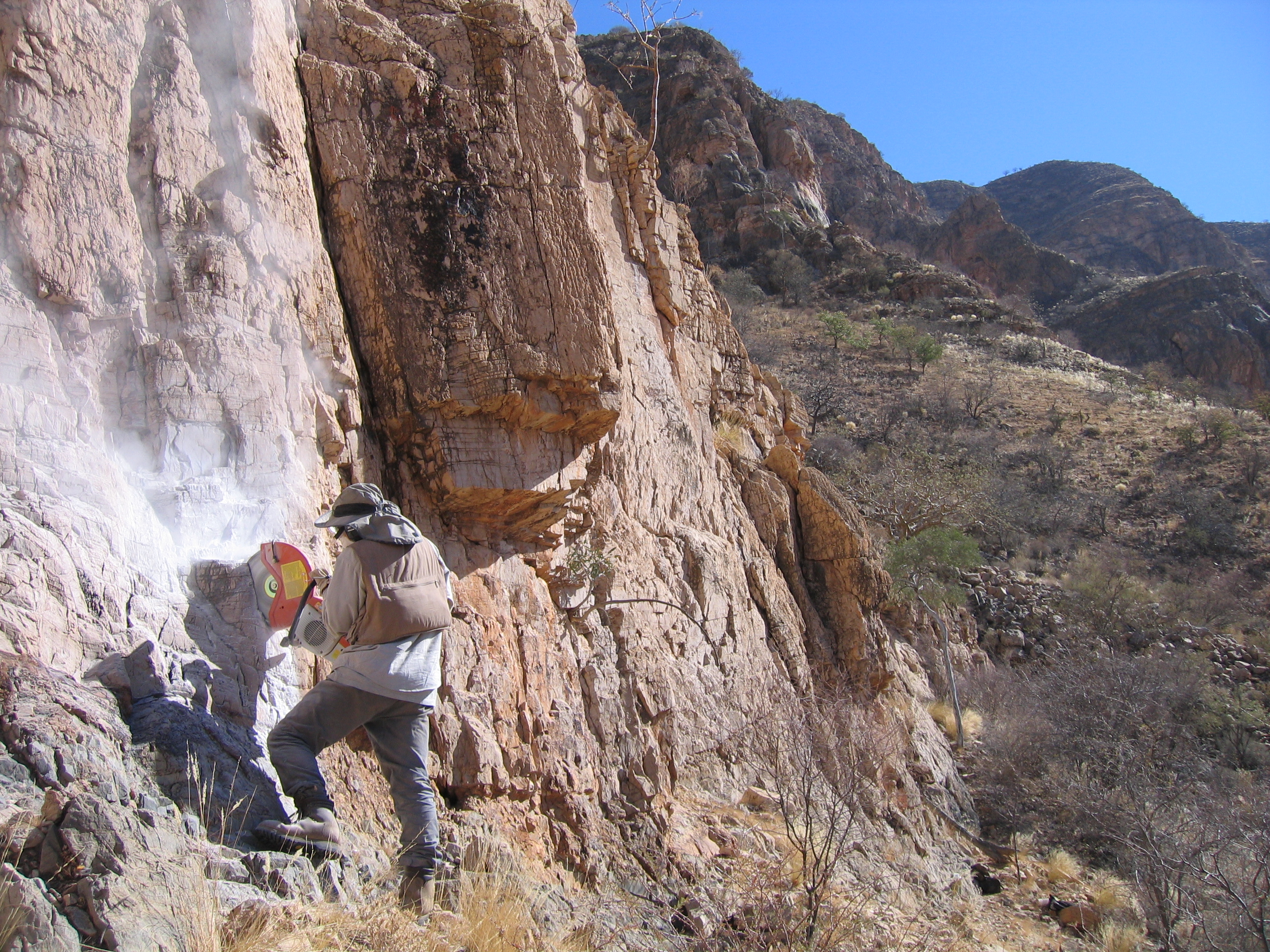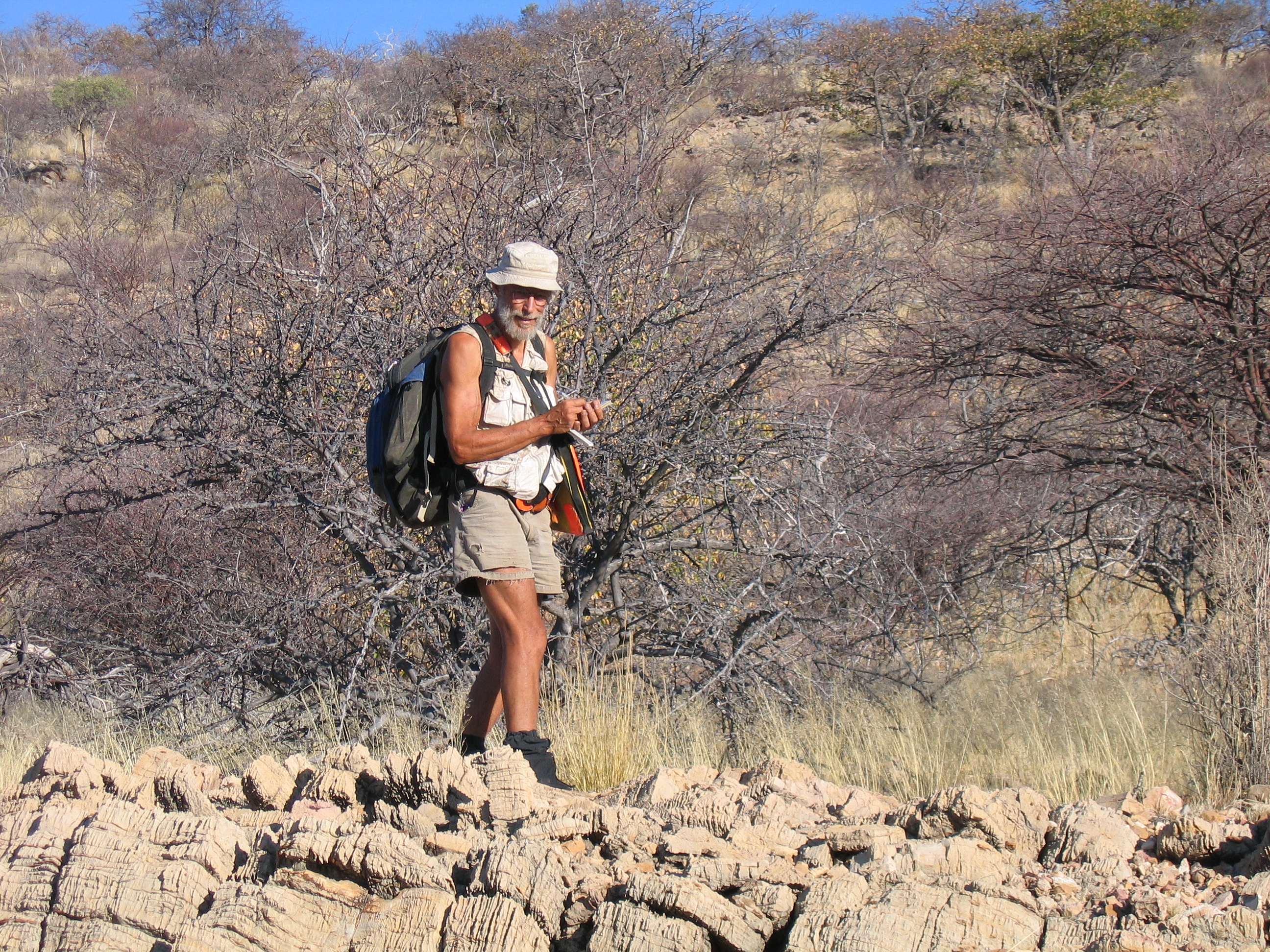Platinum group element anomalies in Snowball Earth deposits
Bodiselitsch et al. (2005, Science) reported concentration anomalies of iridium, a tracer of extraterrestrial material, in basal layers of cap dolomite formations that overlie glacial sediments deposited during the Sturtian (~710 Ma) and Marinoan (~635 Ma) Neoproterozoic "Snowball Earth" glaciations. The authors hypothesize that these Ir anomalies reflect instantaneous deposition, during deglaciation, of cosmic dust that has been stored for millions of years on the global ice cover. If correct, this hypothesis lends support to the "hard" Snowball Earth hypothesis (i.e., Earth frozen to the equator) rather than the "Slushball Earth" hypothesis, which allows for the existence of open water in the tropics.
With funding from WHOI's Ocean and Climate Change Institute we are using a range of geochemical tracers (osmium isotopes, platinum group element concentrations, helium isotopes and concentrations) to detect the presence of extraterrestrial matter in Snowball Earth deposits. Our field work in Namibia in August 2005 was aimed at recovering continuous sections across the glacial-postglacial transition (see Fig. 1). Work on correlative sections from Canada (Mackenzie Mountains) China has been completed. If you want to learn more about the "Snowball Earth" hypothesis, Paul Hoffman's website (http://www.snowballearth.org) provides a comprehensive introduction with many stunning photographs and diagrams developed for classroom use.
With support from NSF-grant EAR-0821878 "SGER: Platinum Group Element Anomalies at Cryogenian Glacial Terminations", REU student Christine Waters (University of Texas at El Paso) investigated two continuous sections across the termination of the Marinoan glaciation in Namibia for PGE and Re-Os isotope systematic. She has presented the results of her summer research at the 2008 Fall AGU meeting and the 2010 VM Goldschmidt Conference. We are currently finishing the analytical work and will be preparing a manuscript.
Partners/Collaborators
Paul Hoffman (Harvard University), Mark Kurz (WHOI), Birger Schmitz (Lund University, Sweden), Christian Koeberl (Vienna University, Austria), Sharad Master (University of Witwatersrand), Christine Waters (now at the Univsity of Hawaii, Manoa).

Bernhard Peucker-Ehrenbrink uses a petrol-powered rock saw to cut into the Ghaub-Keilberg transition exposed in the Hoanib valley in northern Namibia (Agust 11, 2005). (Photo by Ricardo Trinidade)

Paul Hoffman mapping in the Fransfontein Mts, northern Namibia. (Photo by BPE)